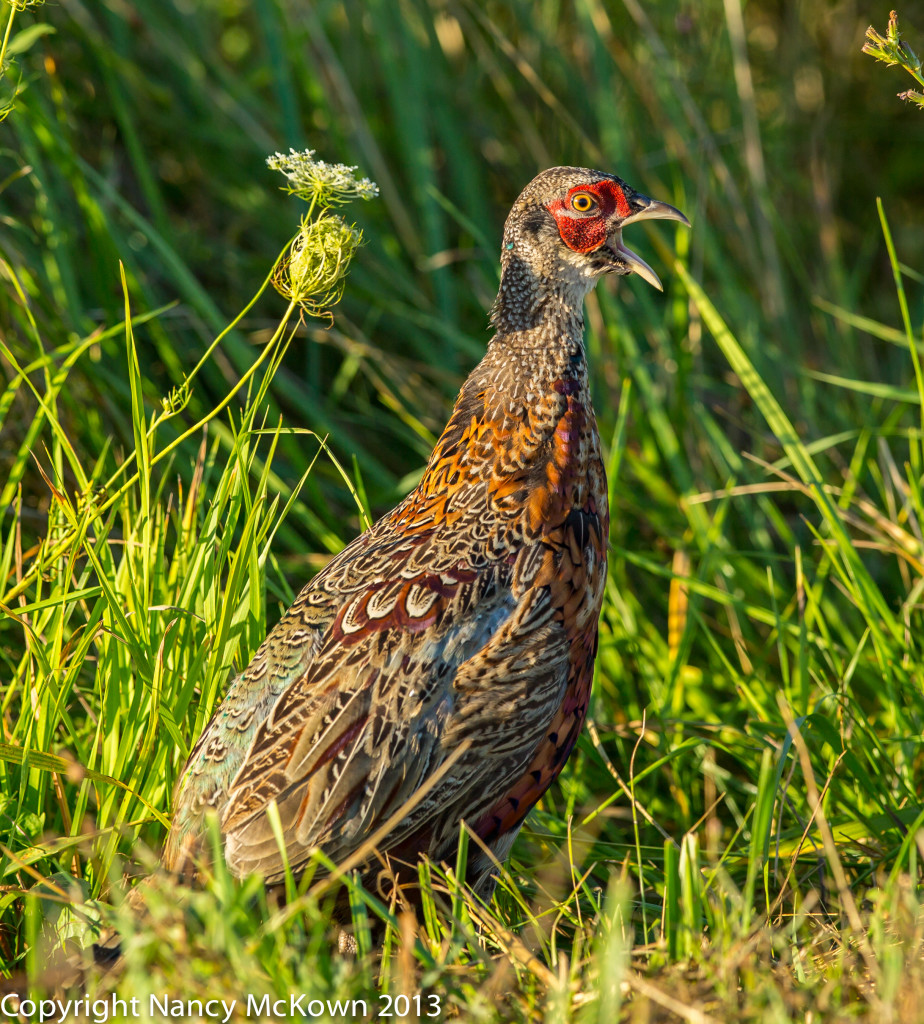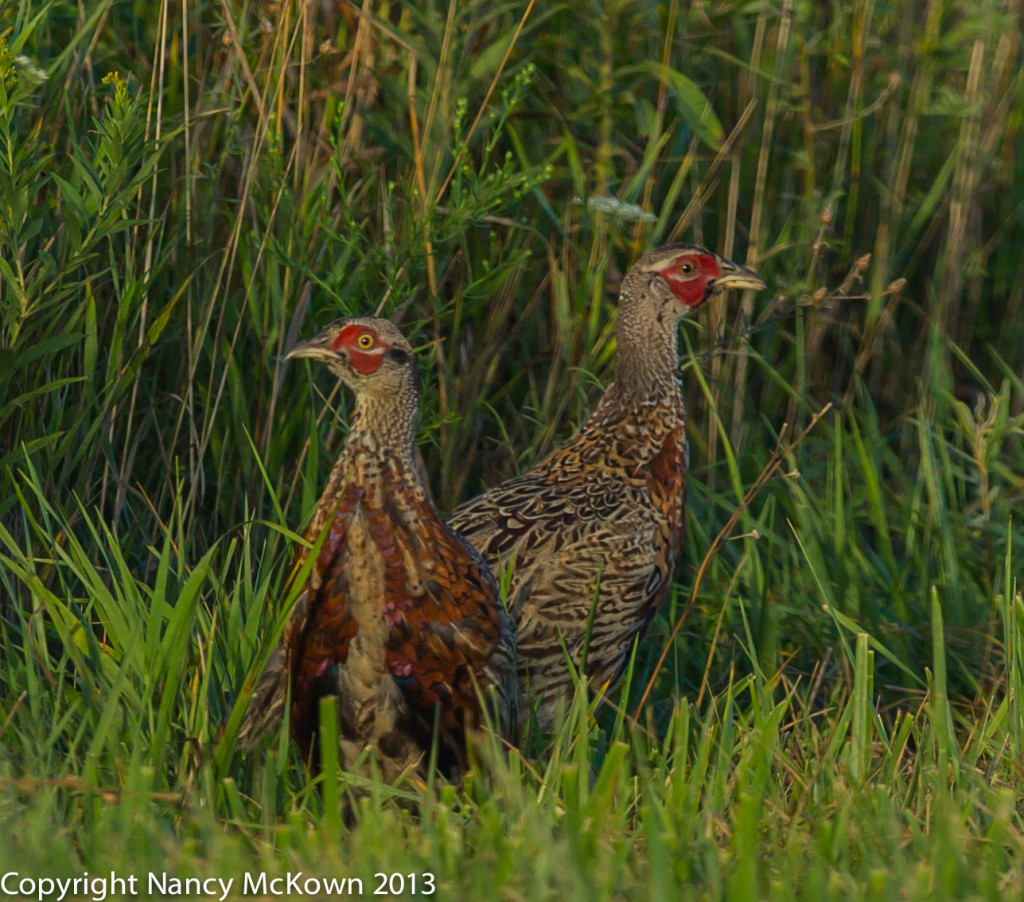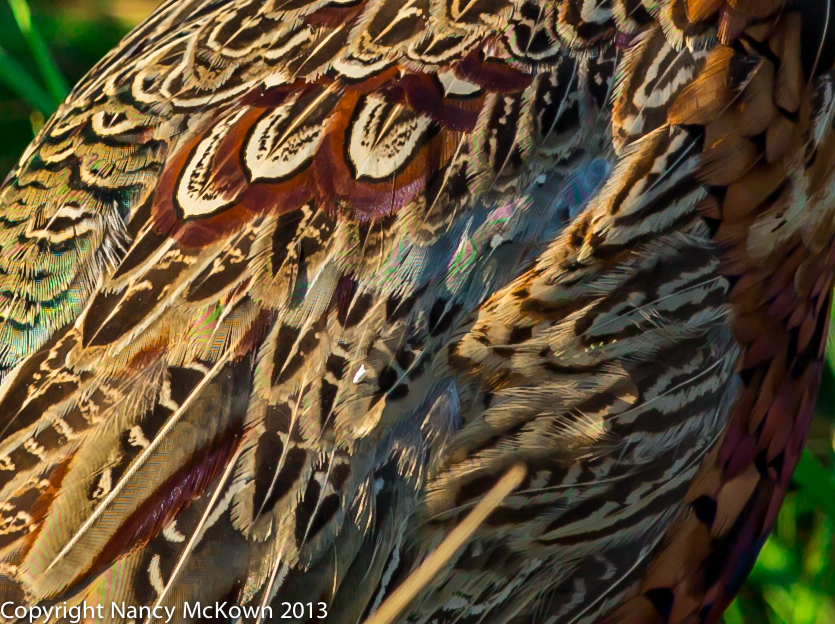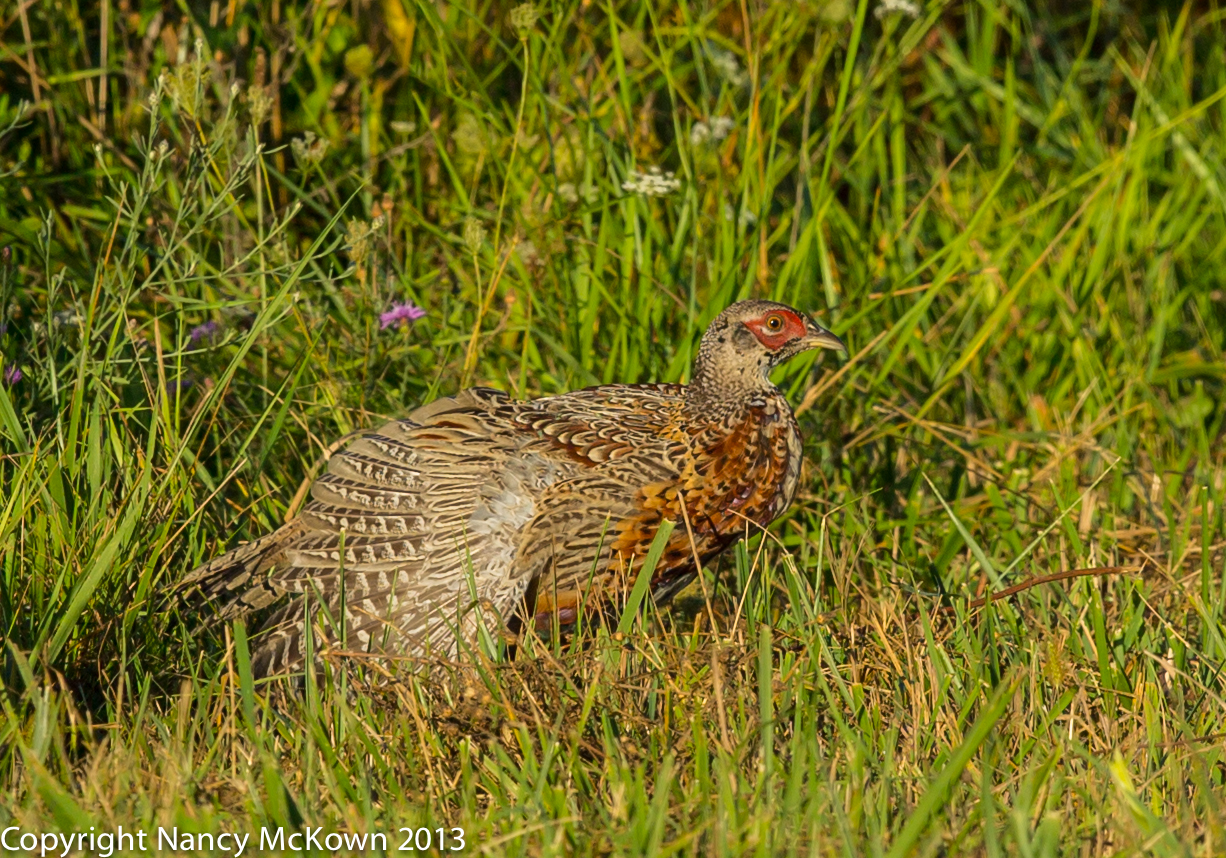Photography Opportunities on the Back Roads
Lately, I’ve been spending a lot of time in my car, traveling down the back roads in the Allegan Forest & Allegan State Game Area, near “Todd Farm”, the Fennville Farm Unit. Todd Farm is a wildlife refuge, located at the west end of the forest. It is full of corn and soybean fields planted specifically for migrating and gaming birds. The DNR officers who work there are friendly and helpful to bird lovers.
The Leaves, They Are A Changin’
Michigan is a great place to be in Autumn. The weather has been sunny and cool. Todd Farm will be open for hunting (in designated areas at designated times), so it won’t be long before the hunters dominate the fields and the birds (and this photographer) will not be out and about.

1/640 second, ISO 200, f/3.5
Photographing Male Ring-Neck Pheasants
Recently I came across 3 immature male ring-neck pheasants on the side of the road near a large, waterlogged ditch. They tolerated my car’s approach, but stayed close to the tall corn stalks and brush in case it was necessary for them to make a quick get away.
What a study in fall colors! The feathers on these birds are bright, varied, spectacular and yet blend with the early autumn landscape. The mature males have elaborate green head feathers and a white ring around their necks. The hens’ feathers are a soft brown, quite plain in comparison to the males.
I have seen groups of these birds running off in the distant fields, but have yet to digitally capture a mature ring-neck pheasant – male or female. The DNR officers said that they see pheasants drying themselves on the road after a rain. I’m hoping to be lucky enough to spot them before hunting season starts in October. I will add those photos to the end of this post if/when I do.
Stabilizer Tools for Photographers
Since the birds were not in a hurry to leave, I had time to try out my new stabilizer tool, a bean bag specifically designed for photographers to use in the field. I needed something to help stabilize the camera and heavy lens on the window ledge when I am in the car and out on the backroads. A quick response to photographing birds demands that the camera is in place and ready to shoot. A bean bag helps to provide quick and easy support on the window ledge. It would also work on a tree stump or post if I wanted to use a remote shutter release out in the field.
The bean bag offers some tension relief for my neck and back. It also allows me to quietly swivel the camera as needed to follow the action without scratching the window ledge or the camera lens. NOTE: I usually have the camera strap around my neck just in case of a spill.
Unfortunately, the bean bag supports the camera right on the window ledge and consequently, does not always give me the height I need for some shots. For eye level support, I rest my camera on a contoured, high density foam neck pillow.
One More Support Tool for Photographers
Often times when I’m driving, I see the bird I want to photograph through the passenger side window. This requires that I quickly move the camera from my window and point and shoot out the passenger window. Since I can’t reach the passenger window from the driver’s side, I can’t rest the lens on it, so I am hand holding that heavy camera/lens – trying to compensate for the inevitable shake with a high shutter speed. (The image stabilizer helps with the shake too.)
I bought a rather large storage bin that rests on the passenger seat; upon which I can stabilize the camera before I aim and shoot through the passenger’s window. This bin also provides enough space inside to store the camera when needed.

1/800 second; ISO 200, f/3.5
Upland Game Birds
My husband said that ring neck pheasants are upland game birds, along with grouse, prairie chickens, partridges, quails, and wild turkeys. They are not native to Michigan, but brought over from China in the mid 1800’s as game birds. They do fly, but their get-aways are more successful if they duck and run. (Survival of the fittest, the flyers were more likely to be shot by hunters.) These young males have probably not yet experienced a Michigan hunting season.
And finally, just in case you need a refresher of the Autumn colors to come, here’s a close-up photo showing the variety of Autumn colors and intricate designs sported by the immature, male ring-necked pheasant.











Hi Nancy – what a treat to find your website. Great bird pictures, and I’m so glad you’ve added photography tips, too. (Dealing with birds out the passenger window is a challenge for me, too — I’m going to try your container tip!)
I found your site while searching for other images of immature male ring-neck pheasants; I have one on the way for my blog, perhaps to-be-posted tomorrow, but it’s pretty much just for my record of Saskatchewan birds I’ve photographed; it’s not as clear or vibrant as yours. Thanks!
Nanc, I really like these pheasant pictures. The feathers are beautiful in the close up pictures.